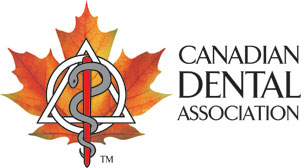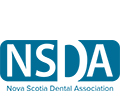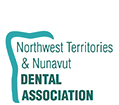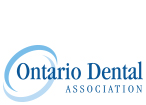About the CDCP
The Canadian Dental Care Plan (CDCP) is a federal government program intended to reduce financial barriers to oral health care for Canadians without a dental plan. The program will provide a dental care subsidy for Canadian residents who do not have dental benefits and have an adjusted household income of less than $90,000 a year.
If you or someone you care for is eligible for the CDCP, here is what you should know before you book your next dental appointment.
KNOW BEFORE YOU GO
For many patients, treatments under the CDCP will not be free
Some CDCP patients won’t have the full cost of their appointment covered. Depending on your family’s income, you may need to pay a percentage of the cost. The federal government will only pay a portion of the CDCP fees and you will be responsible for additional charges known as co-payments. You will have to be pay these amounts directly to your dentist, if:
- your adjusted family net income is between $70,000 and $89,999; and
- you agree to dental care that the CDCP does not cover.
Below is the co-payment breakdown based on adjusted family income.
| Adjusted family net income | How much will the CDCP cover | How much you will cover |
|---|---|---|
| Lower than $70,000 | 100% of eligible oral health care service costs will be covered at the CDCP established fees. | 0% of the CDCP established fees. |
| Between $70,000 and $79,999 | 60% of eligible oral health care service costs will be covered at the CDCP established fees. | 40% of the CDCP established fees. |
| Between $80,000 and $89,999 | 40% of eligible oral health care service costs will be covered at the CDCP established fees. | 60% of the CDCP established fees. |
In addition to the co-payment requirements listed above, many of the established fees covered by the federal government do not meet the full cost of the treatment in a dental office. The difference will be on you.
Preauthorization required for certain services
Starting November 1, 2024, a wider range of essential treatments, including partial dentures, crowns, and higher levels of sedation, became available to CDCP patients through the launch of preauthorization. This expansion offers patients access to more care options.
The preauthorization process means that, while dentists recommend the best treatment based on their expertise, certain procedures need to be approved in advance for some treatments to be covered under the CDCP.
The final decision to provide coverage rests with Sunlife and/or Health Canada. For patients, this process may require additional waiting periods. It’s advisable to discuss potential treatment options with your dentist in advance.
Wait to receive CDCP welcome packages before booking dental appointments
Your CDCP welcome packages may take up to three months to arrive from the time you apply and enrol. Your coverage start date will be laid out in your welcome package and may vary based on when you apply and when your application is processed. This means that you cannot receive care under the program until you have received your CDCP card and observed your start date. Appointments can only be scheduled on or after your coverage start date.
Not everyone is eligible for the plan at the same time
The federal government has committed to rolling out the CDCP coverage in stages. Health Canada is using a staggered approach to patients’ eligibility for care based on their registration date and age cohort.
Currently, the CDCP provides coverage for specific groups, including seniors aged 65 and over, children under 18, and adults with a valid federal Disability Tax Credit certificate. Full expansion is planned in 2025, with applications opening to remaining eligible Canadian residents.
We strongly suggest patients check their eligibility letter/card for their coverage start date.
Frequently Asked Questions
Individuals must meet all of the following criteria to be eligible for Canadian Dental Care Plan (CDCP) coverage.
- No access to dental plan, meaning:
- no coverage through employer or a family member’s employer benefits; including health and wellness accounts;
- no coverage through pension (previous employer) or a family member’s pension benefits; or
- no coverage through a purchased plan by yourself or by a family member or through a group plan from an insurance or benefits company.
- an adjusted annual family net income of less than $90,000;
- be a Canadian resident for tax purposes; and
- have filed their tax return in the previous year.
Canadian residents who have access to dental benefits through a social program offered by their province or territory and/or by the federal government will be eligible for the CDCP if they meet all the eligibility criteria.
Patients who decide to opt out of benefits available to them from their employer, school, etc. will be considered by the federal government as someone who has access to dental plan. This means if you decline dental coverage through your/your spouse’s employment benefits, you will not be eligible for the CDCP.
Read more on Health Canada’s website to see if you qualify.
The Canadian Dental Care Plan (CDCP) is not intended to replace existing dental coverage. It is important that Canadians do not drop their existing coverage, as they might not be eligible for the CDCP if they do.
The CDCP is designed to provide coverage for Canadians who do not have an existing dental plan.
The Canada Revenue Agency now requires employers to report on their T4/T4A whether their employees and their families had access to dental plan coverage, including spending and wellness accounts.
If you have dental coverage through a provincial, territorial, or federal government social program, you can still qualify for the Canadian Dental Care Plan (CDCP). If you meet all the eligibility criteria, your coverage will be coordinated between the plans to ensure there are no duplications or gaps in coverage.
CDA has long advocated for targeted investments to improve access to oral health care and we believe the Canadian Dental Care Plan (CDCP) will help improve access to care for many Canadians, especially for vulnerable populations.
CDA alongside provincial and territorial dental associations and other stakeholders have worked diligently to provide insights and technical expertise to the government for the development and implementation of the CDCP.
We have emphasized our key recommendations from our February 2023 policy paper to guide the development of the CDCP, such as holistic oral health, patient-centred care, prioritization of preventative care, and support for existing dental offices by eliminating administrative burdens and ensuring that a strategy is in place to help address human resource challenges.
Helpful Links:
Government of Canada: Canadian Dental Care Plan
For Patients:
- Do you qualify?
- How to Apply
- Questions about the applications process to Service Canada
- Visiting an oral health provider?
- CDCP Provider Search Tool
For Providers:
- How to participate in the CDCP as a provider
- Providing services on a claim-by-claim basis (starting July 8, 2024)
- 2024 CDCP dental benefit grids
- Useful information to help you navigate claims processing under the CDCP
- CDCP Benefits Guide
- Preauthorization for Additional Units of Scaling
- Preauthorization for Partial Dentures
- Additional resources
General:
- CDCP Claims Submissions Process (video)
- Coordination of Benefits
- More Frequently Asked Questions
- Services covered
Canadian Dental Association
- Policy Roadmap and Key Recommendations: Bridging the Financial Gap in Dental Care: Building a sustainable and effective federally funded program
- News Release: CDA Welcomes Launch of the Canadian Dental Care Plan, But Gaps Need to be Addressed
- Understanding Your Dental Benefits
Last updated: November 13, 2024











